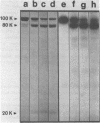Abstract
We describe a method for specifically labelling T7 RNA polymerase at (or near) the active site. Enzyme molecules that have been modified by covalent attachment of a benzaldehyde nucleotide derivative in the presence of template DNA are subsequently incubated with radioactively labelled nucleoside triphosphates. Labelling of the enzyme occurs as a result of the formation of the first phosphodiester bond. The labelling is template-directed and the expected specificity of initiation at individual T7 promoters is observed. The label has been localized to an 80 kd tryptic fragment that contains the carboxy-terminal portion of the enzyme.
Full text
PDF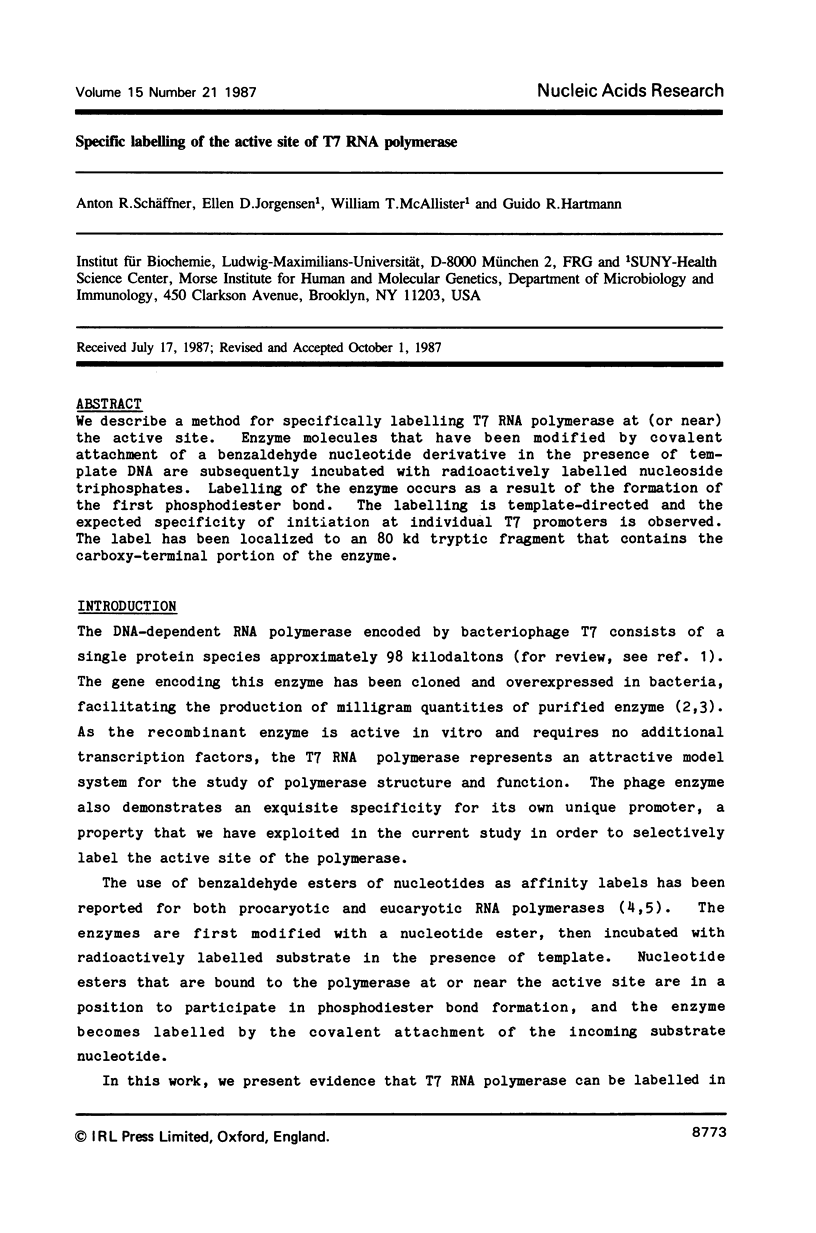
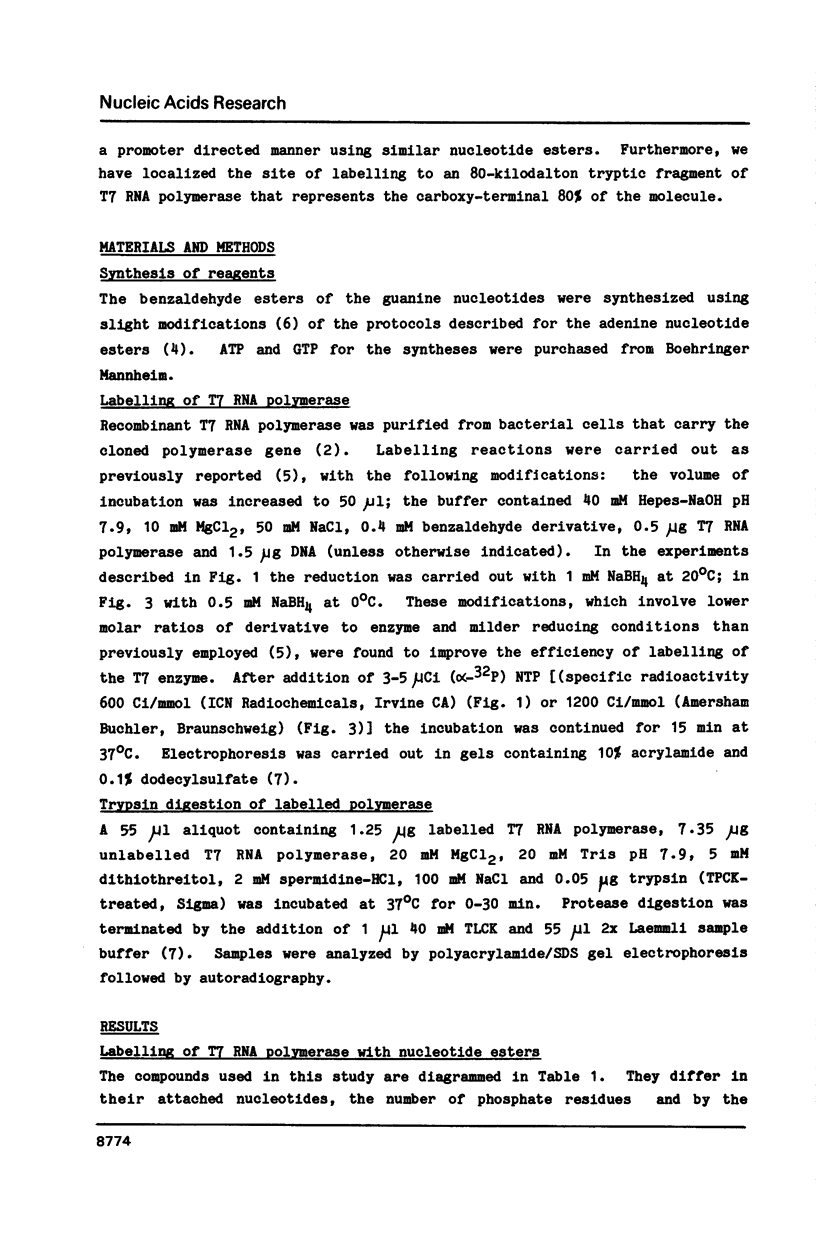
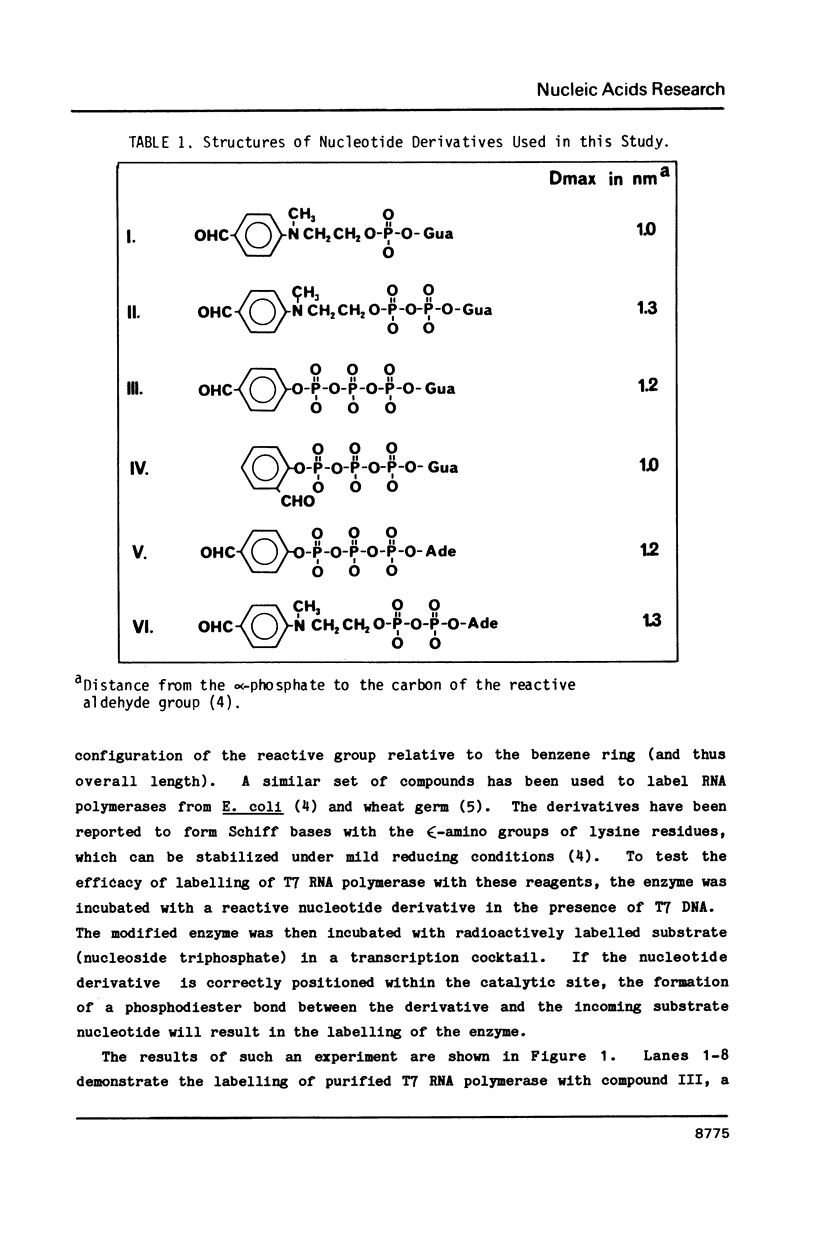
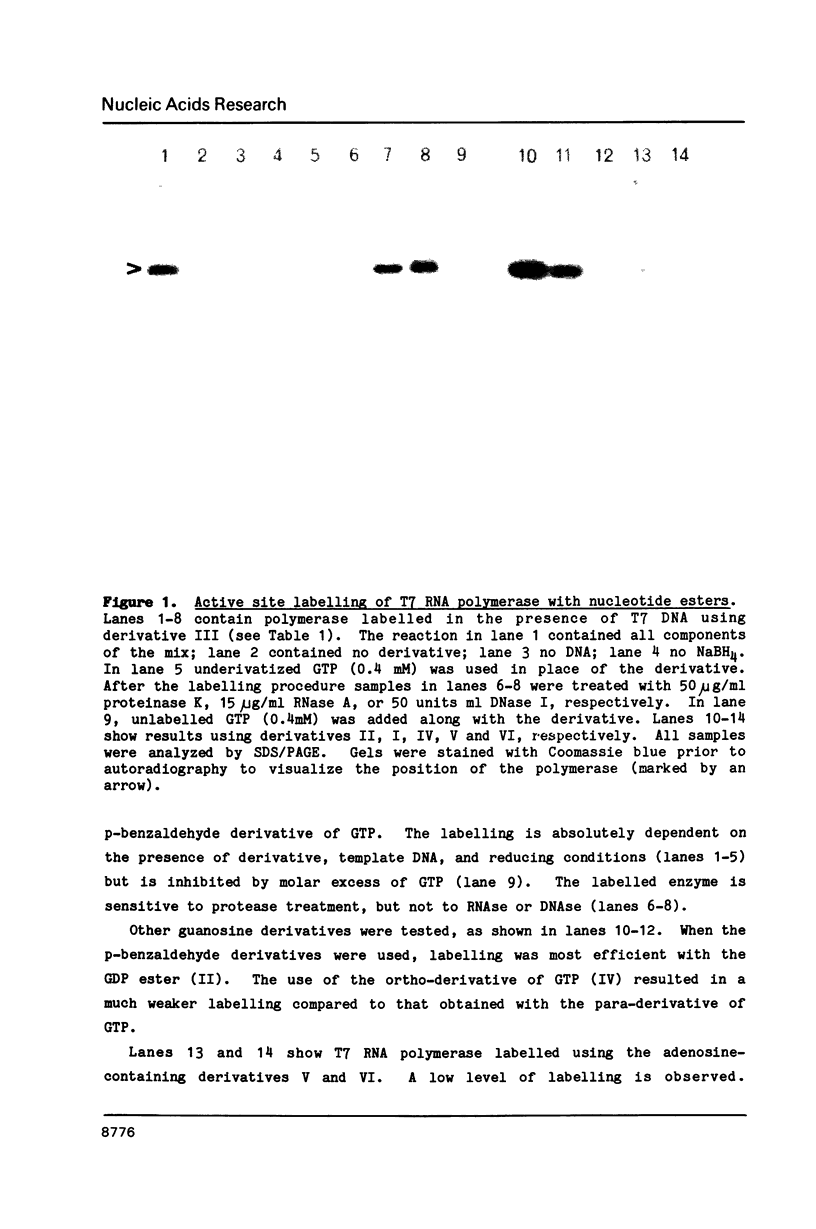
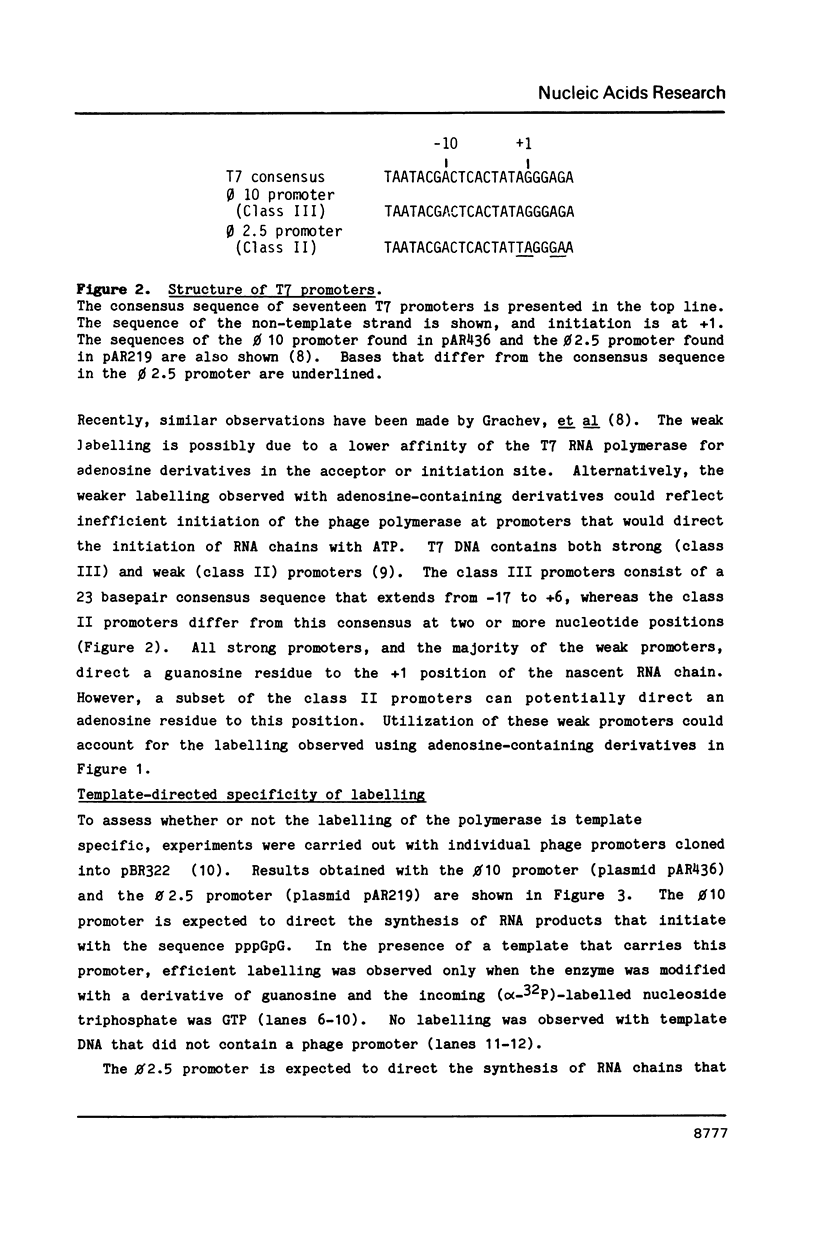
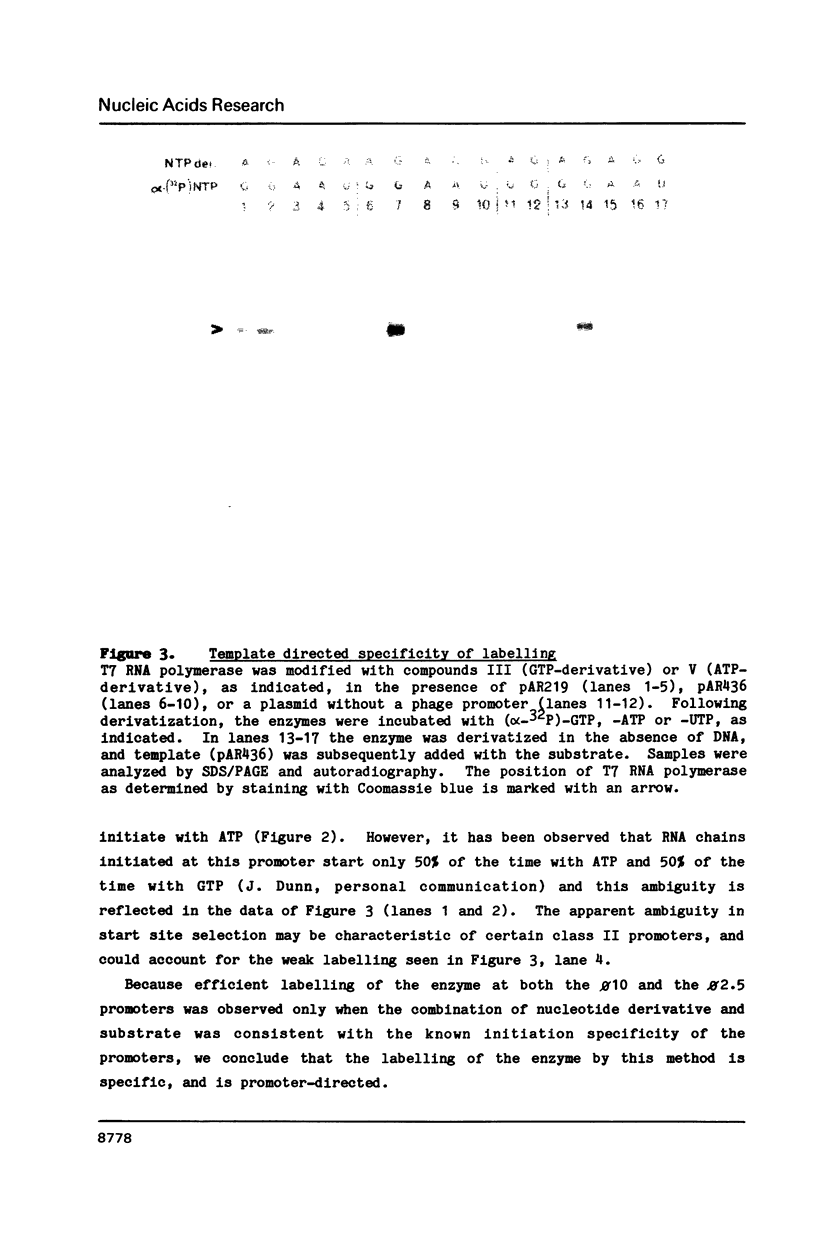
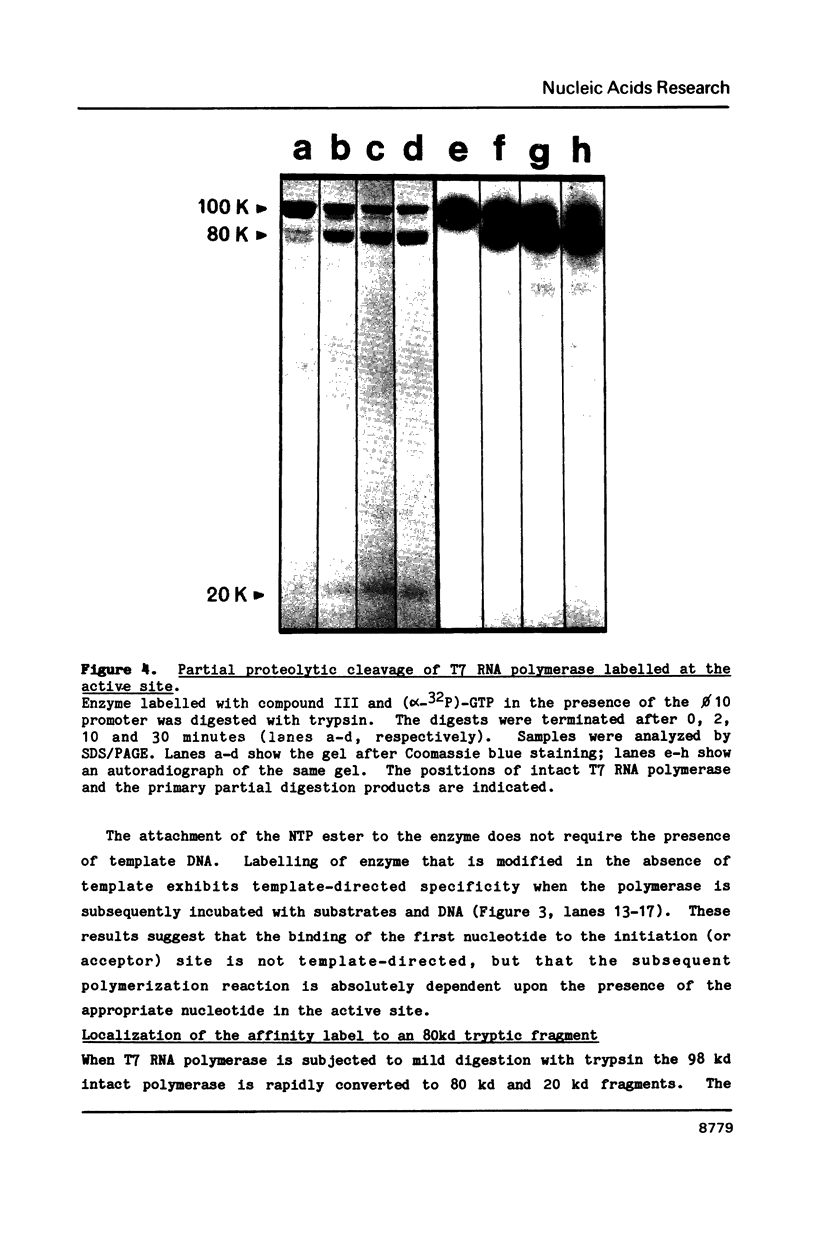
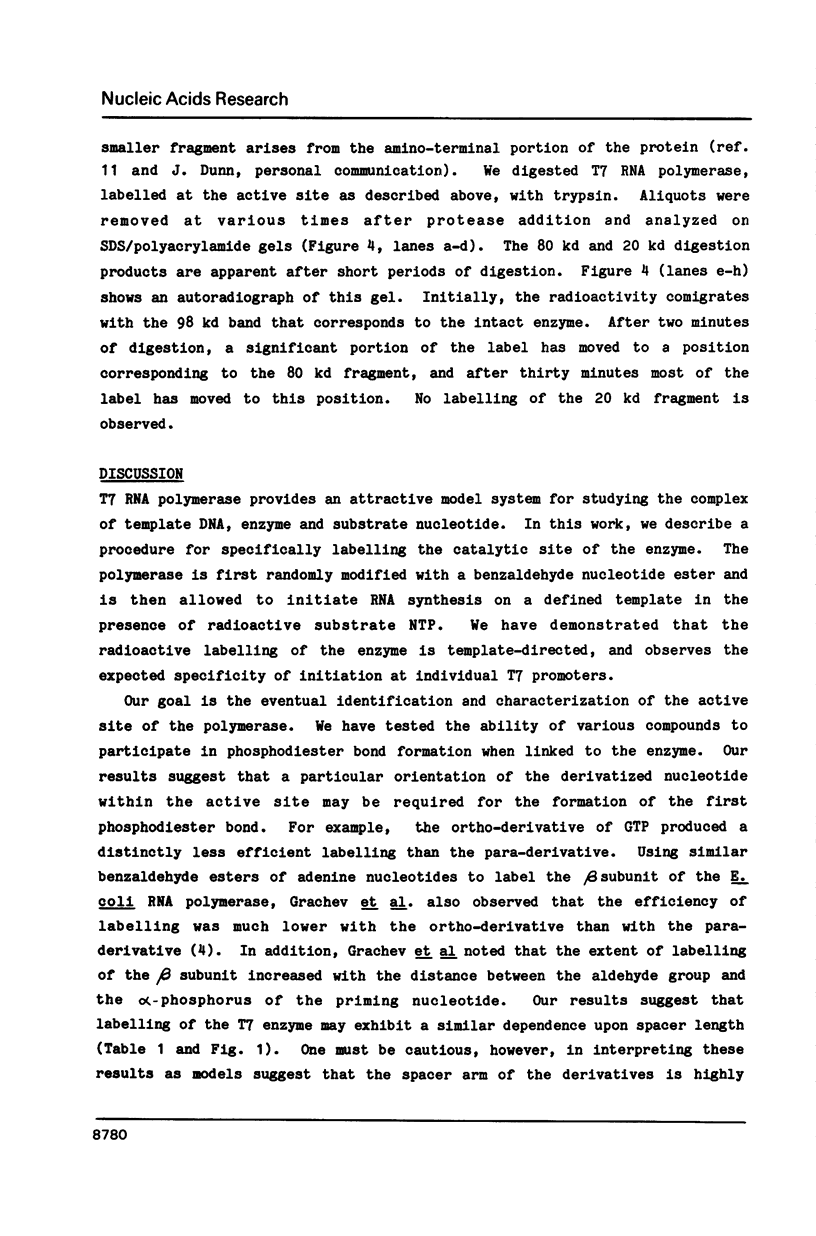
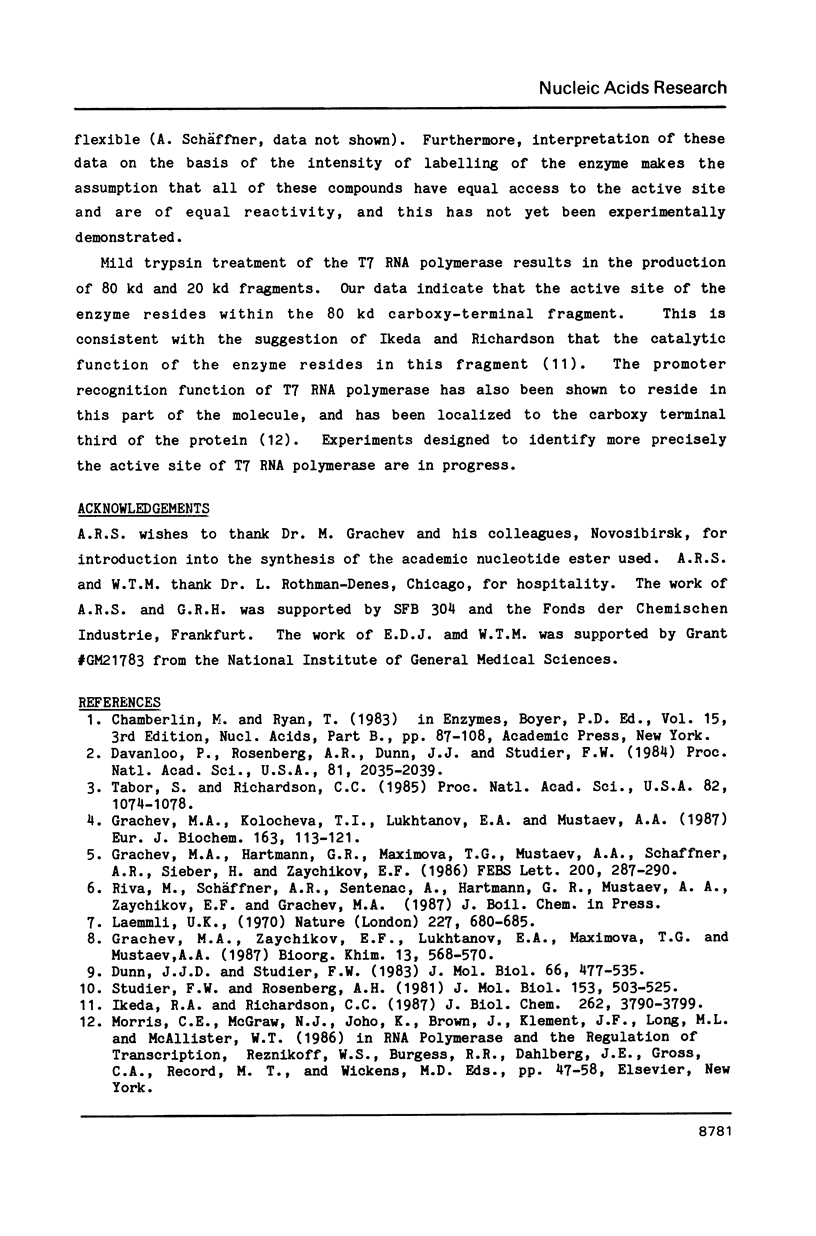
Images in this article
Selected References
These references are in PubMed. This may not be the complete list of references from this article.
- Davanloo P., Rosenberg A. H., Dunn J. J., Studier F. W. Cloning and expression of the gene for bacteriophage T7 RNA polymerase. Proc Natl Acad Sci U S A. 1984 Apr;81(7):2035–2039. doi: 10.1073/pnas.81.7.2035. [DOI] [PMC free article] [PubMed] [Google Scholar]
- Dunn J. J., Studier F. W. Complete nucleotide sequence of bacteriophage T7 DNA and the locations of T7 genetic elements. J Mol Biol. 1983 Jun 5;166(4):477–535. doi: 10.1016/s0022-2836(83)80282-4. [DOI] [PubMed] [Google Scholar]
- Grachev M. A., Hartmann G. R., Maximova T. G., Mustaev A. A., Schäffner A. R., Sieber H., Zaychikov E. F. Highly selective affinity labelling of RNA polymerase B (II) from wheat germ. FEBS Lett. 1986 May 12;200(2):287–290. doi: 10.1016/0014-5793(86)81154-1. [DOI] [PubMed] [Google Scholar]
- Grachev M. A., Kolocheva T. I., Lukhtanov E. A., Mustaev A. A. Studies on the functional topography of Escherichia coli RNA polymerase. Highly selective affinity labelling by analogues of initiating substrates. Eur J Biochem. 1987 Feb 16;163(1):113–121. doi: 10.1111/j.1432-1033.1987.tb10743.x. [DOI] [PubMed] [Google Scholar]
- Grachev M. A., Zaichikov E. F., Lukhtanov E. A., Maksimova T. G., Mustaev A. A. Vysokoselektivnoe affinnoe mechenie DNK-zavisimoi RNK-polimerazy bakteriofaga T7. Bioorg Khim. 1987 Apr;13(4):568–570. [PubMed] [Google Scholar]
- Ikeda R. A., Richardson C. C. Enzymatic properties of a proteolytically nicked RNA polymerase of bacteriophage T7. J Biol Chem. 1987 Mar 15;262(8):3790–3799. [PubMed] [Google Scholar]
- Laemmli U. K. Cleavage of structural proteins during the assembly of the head of bacteriophage T4. Nature. 1970 Aug 15;227(5259):680–685. doi: 10.1038/227680a0. [DOI] [PubMed] [Google Scholar]
- Studier F. W., Rosenberg A. H. Genetic and physical mapping of the late region of bacteriophage T7 DNA by use of cloned fragments of T7 DNA. J Mol Biol. 1981 Dec 15;153(3):503–525. doi: 10.1016/0022-2836(81)90405-8. [DOI] [PubMed] [Google Scholar]
- Tabor S., Richardson C. C. A bacteriophage T7 RNA polymerase/promoter system for controlled exclusive expression of specific genes. Proc Natl Acad Sci U S A. 1985 Feb;82(4):1074–1078. doi: 10.1073/pnas.82.4.1074. [DOI] [PMC free article] [PubMed] [Google Scholar]





